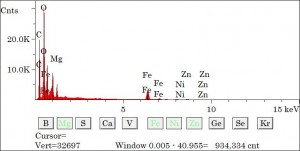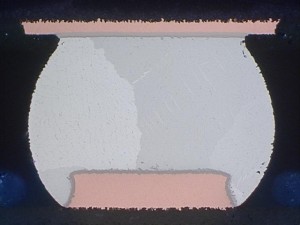Component Analysis
By understanding the underlying integrity of a component, Oneida Research Services component analysis services help clients prevent performance defects by testing and recording the design and robustness of a component or assembly.
Component analysis testing is all about breaking down a product in order to better understand the underlying integrity of each component that goes into it. The component analysis services offered by Oneida Research Services are designed to help clients prevent performance-related defects in their products by testing and recording the design and robustness of each component or assembly in the final design.
Destructive Physical Analysis (DPA): Our Destructive Physical Analysis (DPA) service verifies and documents the quality of device processing steps to avoid defects that will adversely affect performance. By disassembling, testing and inspecting a device, a complete profile can be created to determine how well a device conforms to design and process requirements. ORS has been granted Laboratory Suitability to perform DPA testing on military devices per the test requirements found in Mil Std 750 and/or Mil Std 883.
Construction Analysis (CA): Oneida’s construction analysis service is a customized sequence of applicable analytical techniques to evaluate the inherent design and robustness of a component or assembly. A well-executed construction analysis examines and documents the physical characteristics of a subject, including material elemental composition, dimensions and quality details of the assembly.
Failure Analysis (FA): Failure analysis can provide detailed information regarding the performance of materials and devices in their intended end use application. When a device or material does not meet its performance expectations, a failure analysis should be performed to identify the root cause of failure. The information presented in the root cause failure analysis will allow the product designer and manager, as well as the test and process engineers, to identify design, selection, test, and process deficiencies.
Ion Milling: ORS Labs’ ion milling is a precise type of a material ablation process performed on selected areas to expose underlying material without inducing significant mechanical stresses.
Acoustic Microscopy: The use of scanning acoustic microscopy (SAM) allows ORS to offer unique insights into the integrity of package and device construction via a non-destructive screening technique. Advantages include the detection of void formations, delaminations, cracks and fractures as well as other hidden internal defects within inherently susceptible materials and device types.
Particle Impact Noise Detection: Also known as PIND testing, Particle Impact Noise Detection is the accepted method for detecting particle contamination within an internal cavity. Left unchecked, particle contamination may cause mechanical damage to internal circuitry, leading to catastrophic damage and ultimate failure.
Steam Aging/Solderability: Steam aging is suitable for electronic components, circuit boards, discrete components and other items where artificial aging needs to be tested for life failure evaluation. In conjunction with the aging process, solderability testing can be used to verify that component leads and terminations are not adversely affected by long-term storage.
Acid Decapsulation of Electronic Components: ORS’ acid decapsulation of electronic components is a necessary step to expose the internal construction attributes of a device for inspection and additional testing. Decapsulation of plastic encapsulated devices requires expertise and methods suitable for removal of the component encapsulant without damaging the internal construction features that may vary by design.
Micro Fourier Transform Infrared Spectroscopy(FTIR): FTIR testing is useful for identifying functional groups of small spot-size organic contaminants found on surfaces as part of a full surface analysis test.
Scanning Electron Microscopy (SEM): During SEM analysis, the X-rays, characteristic of the area of the specimen being probed by the electron beam, allow both a qualitative and quantitative determination of the elements present in the selected region. High-energy, back-scattered electrons (BSE) can be separated and used for image formation. Since the back-scattering efficiency is a function of atomic weight, this image reveals compositional variations due to an average atomic number.
X-Ray Fluorescence Elemental Analysis (XRF): The X-Ray Fluorescence technique uses high energy X-rays to excite the sample material then determines the material composition based on the radiation emitted. The process is similar to SEM/EDX.
Ion Milling is a surface preparation technique that is used to aid in materials analysis. Ion Milling can provide distinguishable delineations in the surface topography of a sample.





